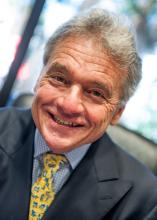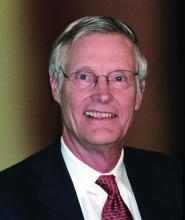The PHP system of care management demonstrates that individuals with substance use disorders can refrain from any substance use for extended periods of time with a carrot and stick approach; permitting a physician to earn a livelihood as a physician is the carrot. In medication-assisted treatment (MAT), the carrot is provided by agonist drugs and the comfort-fit they provide in the brain. They protect the patient from anxiety, and reduce stress and craving responsivity. The stick is an environment that is intolerant of continued nonmedical or addicting drug use. This can be the family, an employer, the criminal justice system, or others in a position to insist on abstinence.
PHP care management shows the way to improve all treatment outcomes; however, an even larger lesson can be learned from the millions of Americans now in recovery from addiction to opioids and other drugs. The “evidence” of what recovery is and how it is achieved and sustained is available to everyone who knows or comes into contact with people in recovery. How did that near-miraculous transformation happen? Even more importantly, how is it sustained when relapse is so common in addiction? The millions of Americans in recovery are the inspiration for a new generation of improved addiction treatment.
Addiction reprioritizes the brain toward continued drug use first, rather than family, friends, health, job, or another important remnant of the addicted person’s past having any meaningful standing. It is often a question like that raised by the AA axiom that it is easy to change a cucumber (naive or new drug user) into a pickle (an addict), but turning a pickle into a cucumber is very difficult. Risk-benefit research has shown that drugs change the ability to accurately assess risks and benefits by prioritizing drug use over virtually everything else, including the interests of the drug users themselves.
Along with judgment deficits comes dishonesty – a hallmark of addiction. The person with addictions lies, minimizes, and denies drug use, thus keeping the addictive run going. That often is the heart of addiction. The point is that once the disease is in control of the addicted brain, those around that hijacked brain must intervene – and the goal of cutting down drug use or limiting it to exclude one or another drug is not useful. Rather, it perpetuates the addiction. Freedom from addiction, that modern chemical slavery, requires no use of alcohol and other drugs, including marijuana, and a return to healthy relationships, sleep, eating, exercise, etc.
Recovery is more than abstinence from all drug use; it includes character development and citizenship. The data supporting the essential goal of recovery are found in the people who are in recovery not in today’s scientific research, which generally is off-target on recovery. Just because recovering people are anonymous does not mean that they do not exist. They prove that recovery happens all the time. They show what recovery is, and how it is achieved and maintained. Current arguments over which MAT is the best in a 3-month study is too short-term for a lifetime disorder and it ignores the concept of recovery despite the millions of people who are living it. Their stories are the bedrock of our message.
Our core evidence, our inspiration, comes from asking the people in recovery from the deadly, chronic disease of addiction three questions: 1) What was your life like when using drugs? 2) What happened to get you to stop using drugs? and 3) What is your life like when not using any drugs?” Every American who knows someone in recovery can do this research for themselves. We have been doing that research for decades.
People in recovery all have sobriety dates. Few in MAT have sobriety dates. Recovery from addiction is not just not taking Vicodin but living the life of a drug-free, recovering person. How do they hold onto recovery, and prevent and deal with relapses and slips? MAT is a major achievement in addiction treatment, including agonist maintenance with buprenorphine and methadone, but it needs to build in the goal of sustained recovery and strong recovery support. That means building into MAT the 12-step fellowships and related recovery support, as is done every day by James H. Berry, DO, of the Chestnut Ridge Center at West Virginia University’s Comprehensive Opioid Addiction Treatment, or COAT, program.15
MAT is good. It needs to be targeted on recovery, which can include continued use of the medicines now widely used: methadone, buprenorphine, and naltrexone. But recovery cannot include continued nonmedical drug use, and it also must include character development – with honesty replacing the dishonesty that is at the heart of addiction.
Holding up that widely available picture of recovery and making it clear to our readers is our goal in this article. For too many people, including some of our most treasured colleagues in addiction treatment, this message is new and radical. The PHP model has put it together in a program that is now more than 4 decades old. It is real, possible, and understandable. The key to its success is the commitment to living drug free, the active and sustained testing for any use of alcohol or other drugs linked to prompt intervention to any relapse, the use of recovery support, and the long duration of active care management: 5 years. That package is seldom seen in the current approach to addiction treatment, which often is siloed out of mainstream medicine – with little or no monitoring or support after the typically short duration of treatment.
People with addictions in recovery remain vulnerable to relapse for life, but the disease now is being managed successfully by millions of people. As dishonesty and self-centeredness were the heart of behaviors during active addiction, so honesty and caring for others are at the heart of life in recovery. This is an easily seen spiritual transformation that gives hope and guidance to addiction treatment, and inspiration to us in our work in treatment – and to all people with addictions.



